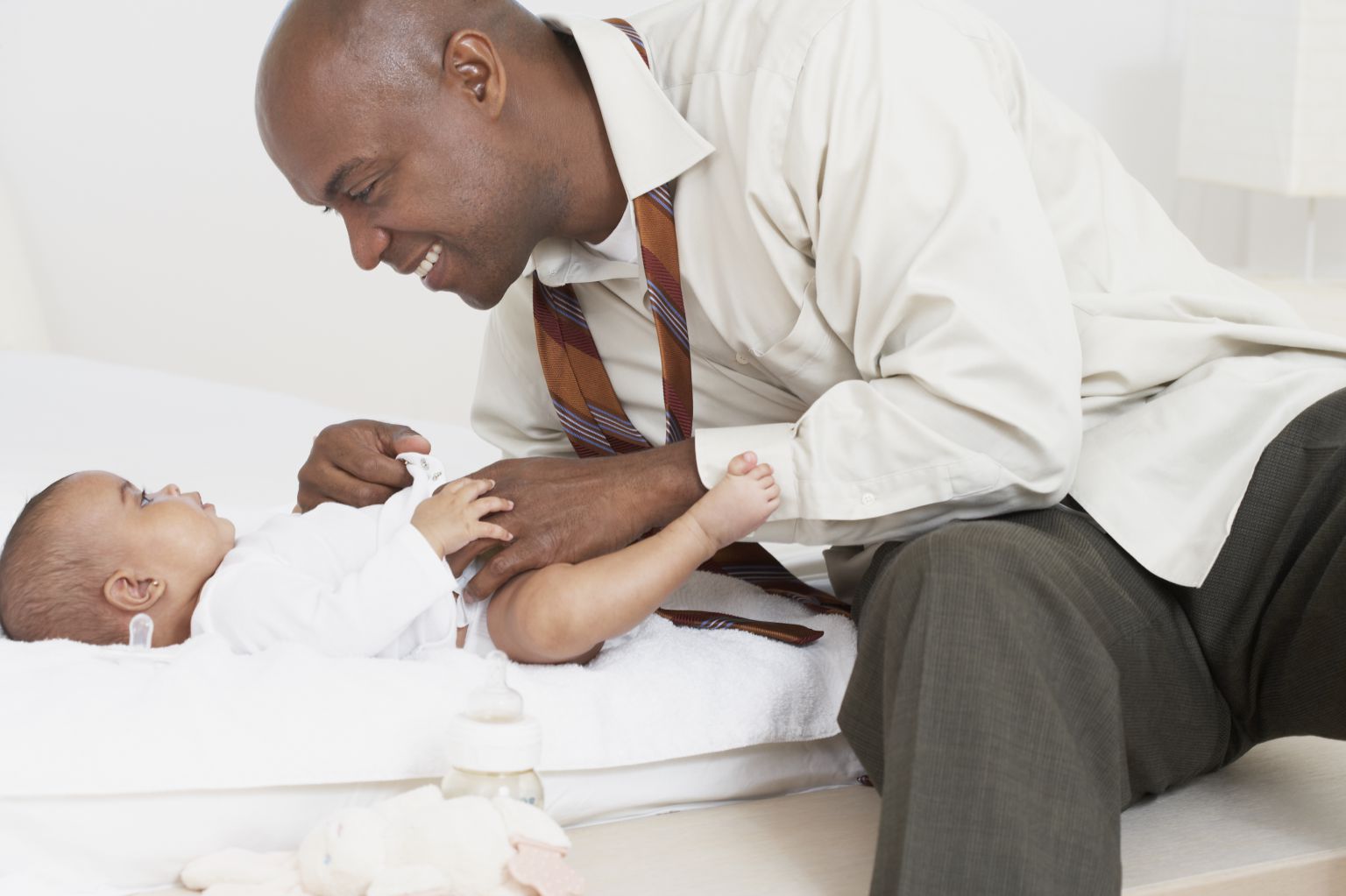Chapter 3. Infancy and Cognitive Development
Introduction

In your book’s chapter on physical and cognitive development in infancy, you learned that full-term newborn infants typically sleep for 18 hours each day. Although they cycle through different stages of sleep, newborns are in the sleeping/drowsy phase about 90% of the time (Thoman & Whitney, 1990). A main concern during infancy is sudden infant death syndrome (SIDS), which is the unexplained death of an apparently healthy infant, often while sleeping, during the first months of life.
Although it strikes only about 1 in 1,000 U.S. babies, SIDS is a top-ranking cause of infant mortality in the developed world (Karns, 2001). Researchers have found a connection between SIDS and the part of the brain that controls the airway when we inhale as well as the brain stem making too much cerebrospinal fluid (Lavezzi et al., 2010; 2013). There are environmental causes as well.
Activity
In this activity, you will learn more about Dr. Susan Beal’s research on SIDS and measures that can be taken to help prevent it.
Watch the video below and then answer a few questions.
1 of 4
vHj3GhydFnc85Zl69HLBEyoHH9szPU5Ni95I8lkmZ6T5Hes4d9Ejegjfg+Y+Ij37GEI9Ha4dwpXgnAakyhJITdpEYcCftLKBzX9nL4i4TgBa/q9hLdRuo7F1YT6NxgfiIN/QmQ1ZUYDxrFoj+quwEx+Wp2RpPQXtLyAnfgWSMp9YGiI7hJnp/a+Ufn0JoS6zJK2cRkdyw6VCRYq2TyCsja3M+nBUyURy0875DcvKK1drFHSEW6HussND9GDwOnSlJ41Cqw==2 of 4
t+uu9VNUU26OiQVC36JfoD4pIveJEQq87KIAB7WAVhVdmOnjv9J+/hd1TT3eE3vtUYu1cpFlH8omR6j/M1WnvvOxyQghJknkd82ym/o4GsvY3tx9X6pPo5enHO/Sd6f9tSYBXgsG4qf9oufKQQHeVctJXpZo63Twub6hKjzKNvxjP6N6aRx/sZjRdw84+nDvPg0qt/cG+oU7ZQsf7ofpF2q1iiM5YMKirPZdrOxoM8lrygqhaWYGd1uU+YvhATqzzTN50AzJiCJ2VpoGJi9QWmukR48FsuKFgmG73u+ppMeuh0Mxvigtd2x/u1Y=3 of 4
/ZGv3UWsTipw75t+X7q0uZqi4XHO7RVfwG1cdLH1BwNbK0F+7eSSoRzKe188BhSmyZpLSpXFm50L9PZ9FF+a9qUtQOuvNmkJUBognZcQp8ms0gTgk3lDEA3SVLyIAi7pmbUmlL8EQDKsEZl0XG7xvKJwRmtuoTvlYX/rH8Gz/2UUrIR7l3xXef1Nvf3g6YsnAYBIo8eouVhU5H6YEF/nahsQqAu5xANzTY4dhYDv3x8IKjLtK+hqPBwJ8xgJVhOC2tBWyuxj6RIsuZlwzDis3oHhXv06WNI49ILMMyc1U+BHoGmB4Rlw0C2jH9GpvS19Ed5NQQCtSu+VMqKN/qbD74MeuCrg2A2/63BuHyQlY0OFdb74Ff4FsGPiFXDACSnjvEhhN82h3skkYi3pxZZwbfbofLpJN18bLu2kXnRDfNfCIJ88T9vl0Ke9oBW7pYwD4 of 4
YeCsuKf+bPxWULiCKO8Oals4owoR/VsGByo3tu9msYP1zR8FY4S+HLkfoWSKY/MT26K0+dmvqZh5OBfeWGf7yJC/jm8LqNRsjsfbizq9L5SVr10ZHie5D3ICB8axudjRfz4+ihcyZeVPwDrvwCLnqXh+sbwNlhDS6a3ePBOOWSCTLfS7T+En9u7Vr1G6Y5AmYbOKbwUmM5niZpp/9Fu6vAMt+jvoBtjWbvVct7p/wDXntxkYbKFeL/ocBiy0XRuOicxzGMXq4Tf/FRQI3Qub0FnJu00DD4Y22w+WHpBpv0SyfWYd9g288OYHthZATnRYRaGp9CI2jgO1u0weSomething to Consider
1 of 1
xJGsV+5unhXP2LCYaIoO1A==Many parents choose to co-sleep with their infants (Ball, 2007; Germo et al., 2007). While some researchers argue that co-sleeping helps regulate babies’ breathing and may help prevent suffocating at night (St. James-Roberts, 2007), bed-sharing infants do spend a great deal of their sleep time on their stomachs (Mao et al., 2004), which may increase the likelihood of SIDS. During the early 1990s, this evidence prompted the American Academy of Pediatrics to urge parents to put infants to sleep on their backs and the “Back to Sleep” campaign was a success.
At the outset of the campaign in 1992 to 1997, there was a 43 percent reduction in SIDS deaths in the United States (Gore & DuBois, 1998). This may hinder co-sleeping as many infants who sleep with their parents sleep on their stomachs. However, New Zealand scientists found a compromise (Ball & Volpe, 2013). They encouraged these women to return to another old-style practice—weaving a baby sleeping-basket, called a wahakura. The basket provides a safer sleeping place for infants, particularly within a shared parental or caregiver bed. The bed, which made it easier for children to sleep on their backs and still be close to their parents, made co-sleeping scientifically “correct.”
What choices will you make as a parent to help prevent SIDS?
References
Ball, H. (2007). Bed-sharing practices of initially breastfed infants in the first 6 months of life. Infant and Child Development, 16, 387–401.
Ball, H. L., & Volpe, L. E. (2013). Sudden Infant Death Syndrome (SIDS) risk reduction and infant sleep location—Moving the discussion forward. Social Science & Medicine, 79, 84–91.
Germo, G. R., Chang, E. S., Keller, M. A., & Goldberg, W. A. (2007). Child sleep arrangements and family life: Perspectives from mothers and fathers. Infant and Child Development, 16, 433–456.
Gore, T., & Dubois, R. (1998). The “Back to Sleep” campaign. Zero To Three, 19(2), 22–23.
Karns, J. T. (2001). Health, nutrition, and safety. In G. Bremner & A. Fogel (Eds.), Blackwell handbook of infant development (pp. 693–725). Malden, MA: Blackwell.
Lavezzi, A. M., Corna, M., Mingrone, R., & Matturri, L. (2010). Study of the human hypoglossal nucleus: Normal development and morpho-functional alterations in sudden unexplained late fetal and infant death. Brain & Development, 32, 275–284.
Lavezzi, A. M., Matturri, L., Del Corno, G., & Johanson, C. E. (2013). Vulnerability of fourth ventricle choroid plexus in sudden unexplained fetal and infant death syndromes related to smoking mothers. International Journal of Developmental Neuroscience, 31(5), 319–327.
Mao, A., Burnham, M. M., Goodlin-Jones, B. L., Gaylor, E. E., & Anders, T. F. (2004). A comparison of the sleep-wake patterns of cosleeping and solitary-sleeping infants. Child Psychiatry & Human Development, 35, 95–105.
St. James-Roberts, I. (2007). Helping parents to manage infant crying and sleeping: A review of the evidence and its implications for services. Child Abuse Review, 16, 47–69.
Thoman, E. B., & Whitney, M. P. (1990). Behavioral states in infants: Individual differences and individual analyses. In J. Colombo & J. W. Fagen (Eds.), Individual differences in infancy: Reliability, stability, prediction (pp. 113–135). Hillsdale, NJ: Erlbaum.